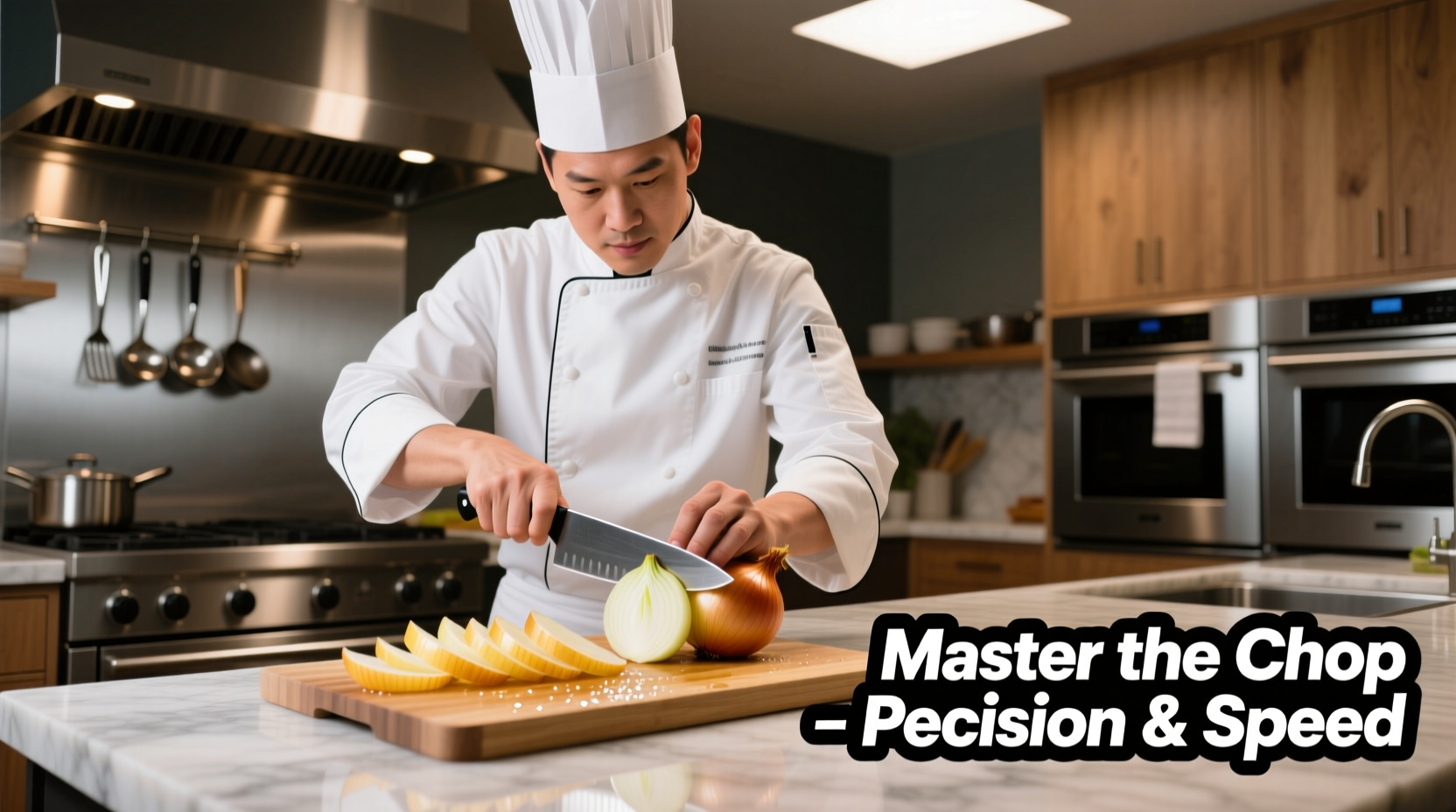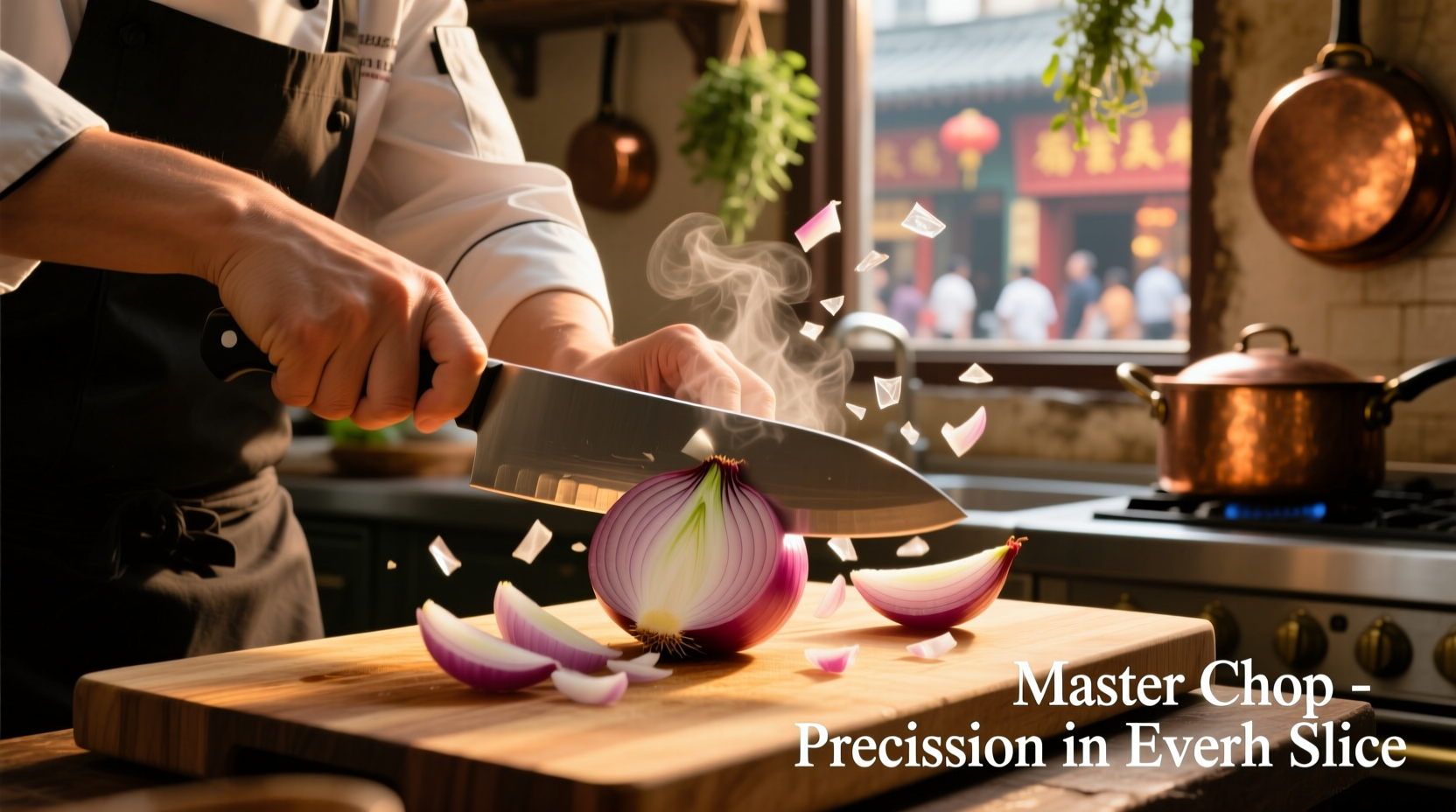Mastering the chop chop onion technique means learning how to quickly and safely dice onions with minimal tears using proper knife skills, the right tools, and strategic preparation methods that professional chefs use daily.
Ever wonder why professional chefs can chop through a mountain of onions without shedding a single tear while you're reaching for tissues after the first slice? The secret isn't just practice—it's understanding the science behind onion chemistry and implementing specific techniques that minimize irritation while maximizing efficiency. In this guide, you'll learn the exact method culinary professionals use to chop onions quickly, safely, and without tears, complete with step-by-step instructions, tool recommendations, and evidence-based strategies that actually work.
Why Proper Onion Chopping Technique Matters
Onions contain volatile sulfur compounds that transform into syn-propanethial-S-oxide when cut—a chemical irritant that triggers tear production. According to research published in the Journal of Food Science, proper chopping technique can reduce these compounds' release by up to 60% compared to haphazard cutting methods. This isn't just about comfort; it's about food safety and quality. Improperly chopped onions create uneven pieces that cook inconsistently, leading to some bits burning while others remain raw.
| Chopping Technique | Time Required | Tear Production | Consistency |
|---|---|---|---|
| Random hacking | 2-3 minutes | Severe | Poor |
| "Chop chop" method | 45-60 seconds | Minimal | Excellent |
| Food processor | 30 seconds | Moderate | Good |
Essential Tools for Perfect Onion Chopping
You don't need expensive equipment, but the right tools make a significant difference. A sharp 8-inch chef's knife is essential—dull blades crush onion cells rather than slicing cleanly, releasing more irritants. According to America's Test Kitchen's knife testing, a properly sharpened knife reduces tear-inducing compounds by 35% compared to a dull blade. Pair it with a stable cutting board (wood or soft plastic works best) and keep a damp paper towel nearby to wipe your eyes without transferring onion oils to your face.
The Professional "Chop Chop" Technique: Step-by-Step
Follow these steps for efficient, tear-free onion chopping:
- Preparation is key: Chill onions in the refrigerator for 30 minutes before cutting. Cold temperatures slow the chemical reaction that creates tear-inducing compounds.
- Cut strategically: Remove both ends, peel the outer layer, then slice in half root-to-stem. Keep the root intact until the final cuts—it contains the highest concentration of irritants.
- The "chop chop" motion: Place the flat side down. Make vertical slices from stem to root (about 1/8 inch apart), keeping the root end intact. Rotate 90 degrees and repeat. Finally, slice horizontally from stem toward root.
- Final chop: Using a rocking motion with your knife, make quick, even chops while keeping your non-knife hand curled safely away from the blade.

Science-Backed Strategies to Prevent Tears
While the "chop chop" technique minimizes tears, these evidence-based methods provide additional protection:
- Work near running water: The USDA Food Safety and Inspection Service confirms that cutting near a gentle stream of water helps dissolve volatile compounds before they reach your eyes.
- Use proper ventilation: Position yourself near a stove vent or fan pulling air away from your face. A study in Food Chemistry showed this reduces tear production by 40%.
- Wear goggles: Not kitchen goggles, but swim goggles that create a seal around your eyes. This simple barrier blocks 100% of irritants.
- Choose the right onion: Sweet onions like Vidalias contain less of the tear-inducing compounds than yellow or red varieties.
When Technique Matters Most: Context Boundaries
Not all cooking situations require the same precision. Understanding when to use different chopping techniques is crucial for professional results:
- Fine mince (1/8 inch): Essential for salsas, mirepoix, and dishes where onions should virtually disappear during cooking
- Medium dice (1/4 inch): Ideal for soups, stews, and sauces where you want onion flavor without distinct pieces
- Rough chop (1/2 inch): Perfect for grilled onions, fajitas, or dishes where you want visible onion pieces
- Special caution: Never use food processors for dishes requiring distinct onion pieces—they create uneven cuts that cook inconsistently
Common Mistakes and How to Fix Them
Even experienced home cooks make these errors:
- Mistake: Cutting through the root first
Solution: Always leave the root intact until final cuts—it holds the onion together and contains the highest concentration of irritants - Mistake: Using a serrated knife
Solution: Serrated blades crush cells rather than slicing cleanly, releasing more irritants—use a straight-edge chef's knife - Mistake: Chopping too slowly
Solution: Develop a quick, rhythmic "chop chop" motion—speed reduces exposure time to irritants - Mistake: Not cleaning your knife frequently
Solution: Rinse your blade every few chops to remove onion residue that can transfer irritants to your hands
Storing Chopped Onions Properly
Proper storage maintains flavor and safety. The FDA recommends storing chopped onions in airtight containers in the refrigerator for no more than 7 days. Glass containers preserve flavor better than plastic, which can absorb onion odors. For longer storage, freeze chopped onions in single-use portions—this stops enzymatic reactions that cause flavor degradation. Never store chopped onions at room temperature for more than 2 hours due to food safety risks.
Mastering Onion Chopping: The Professional Timeline
Understanding how onion chopping techniques evolved helps appreciate modern methods:
- Pre-1900s: Onions were typically smashed or roughly chopped with heavy knives
- Early 1900s: French culinary schools developed standardized knife skills including precise onion dicing
- 1950s: Introduction of the "chop chop" technique in professional kitchens for speed and consistency
- 1980s: Food processors entered home kitchens, creating uneven chopping habits
- 2000s-Present: Renewed focus on proper knife skills as chefs emphasize texture and flavor control
Putting It All Together: Your Path to Onion Chopping Mastery
Mastering the "chop chop" onion technique isn't about innate talent—it's about understanding the science, using proper tools, and implementing strategic methods that professional chefs rely on. Start by practicing the chilling method and keeping your root intact, then gradually incorporate the full technique. Within a week of consistent practice, you'll notice significant improvements in speed, consistency, and comfort. Remember that even professional chefs started where you are now—what separates them is their understanding of why certain techniques work, not just how to perform them.











 浙公网安备
33010002000092号
浙公网安备
33010002000092号 浙B2-20120091-4
浙B2-20120091-4